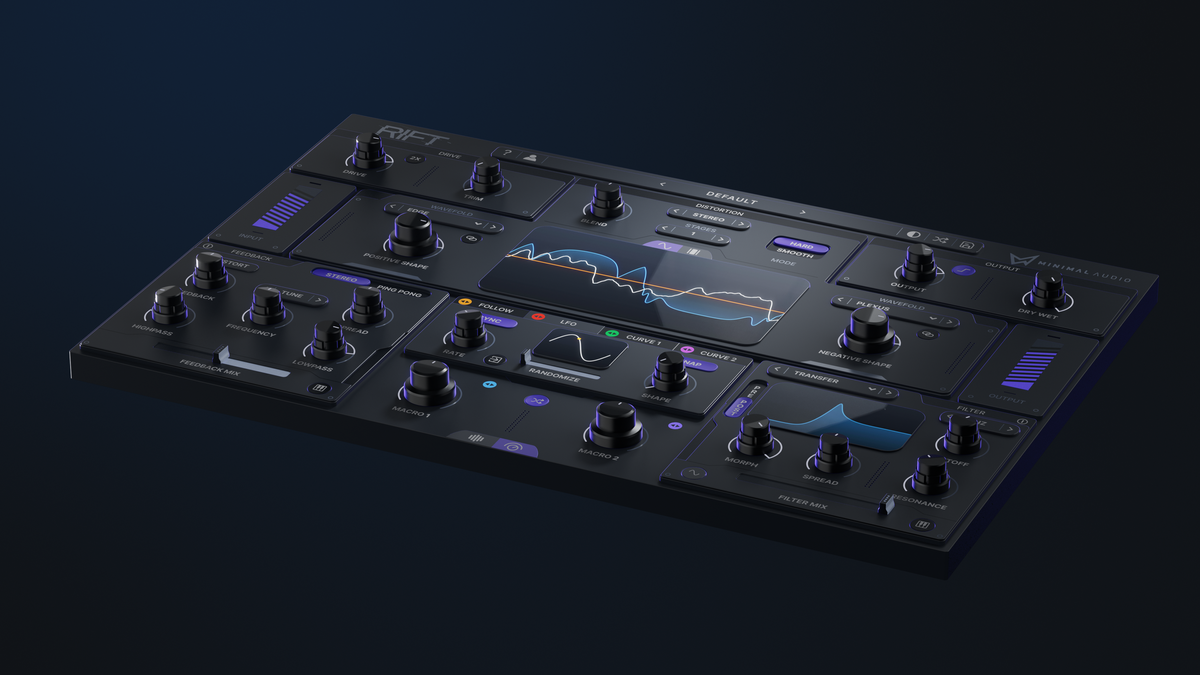Hey everybody, this is Jake T. with Minimal Audio. I've been given the honor of taking over writing for the blogs here on our website. I'm incredibly excited to offer what I can in the way of information and expertise towards the amazing creative tools that our team has spent countless hours perfecting. So if you're anything like me and you enjoy content that covers spotlights on our plugins, history, tutorials, and a lot of other amazing audio info. Then this is the place for you! Check back here every week as we explore all of those topics and more in our survey of the wide world of music production!
For my inaugural entry, I thought it prudent that I pay my respects to the OG of the Minimal Audio plugin library. A morphing distortion plugin hand-crafted to allow for near-endless possibilities. Whenever I see the videos, and feedback posted by our users I am floored by their creativity and intuition. I'm of course talking about the plugin with the most dazzling distortion in this or any other dimension: Rift!
Rift, is our one-of-a-kind morphing distortion effect, a multi-stage modulation powerhouse, that holds special distinction as the first multi-polar distortion plugin. Sounds pretty special right? Well, I think so too. So much so in fact, that I'd like you to join me on a deep dive into the brilliant depths of this one-of-a-kind distortion effect. So without further adieu, let's jump in and see what makes Rift the pre-eminent plugin for all of your sound pulverizing needs.
A 90-Year History
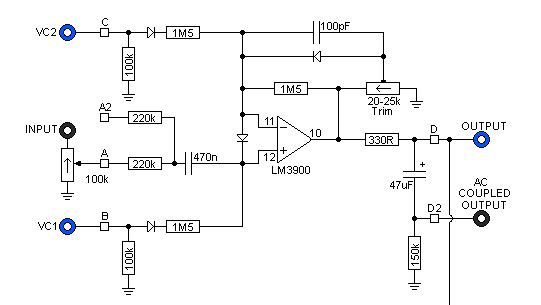
First things first to illuminate what makes Rift such a singularly special tool for music creation, it’s important to have some context about the history of distortion. Essentially, I need to show you where the effect has been so that you can see how far Minimal has taken it.
For a lot of musicians, distortion is the first audio effect we become consciously aware of. Sure, somewhere in our deep subconscious we register the shapes and shades of different sounds created from things like reverb chorus or delay. But rarely does an audio effect have such a firm seat in the public consciousness as distortion does.
There are a lot of reasons for this. The manipulation of a signal’s volume is one of the foundational elements of signal processing after all; but for my money, I think it's due to distortion’s elegant inelegance. Distortion is not a subtle effect. While it can be used subtly by providing warmth and texture to a sound, in distortion's most iconic applications it is front and center in the middle of your speakers. So why is that? And how was distortion even discovered in the first place? Well, I'm so glad you asked.
Driven by the Delta
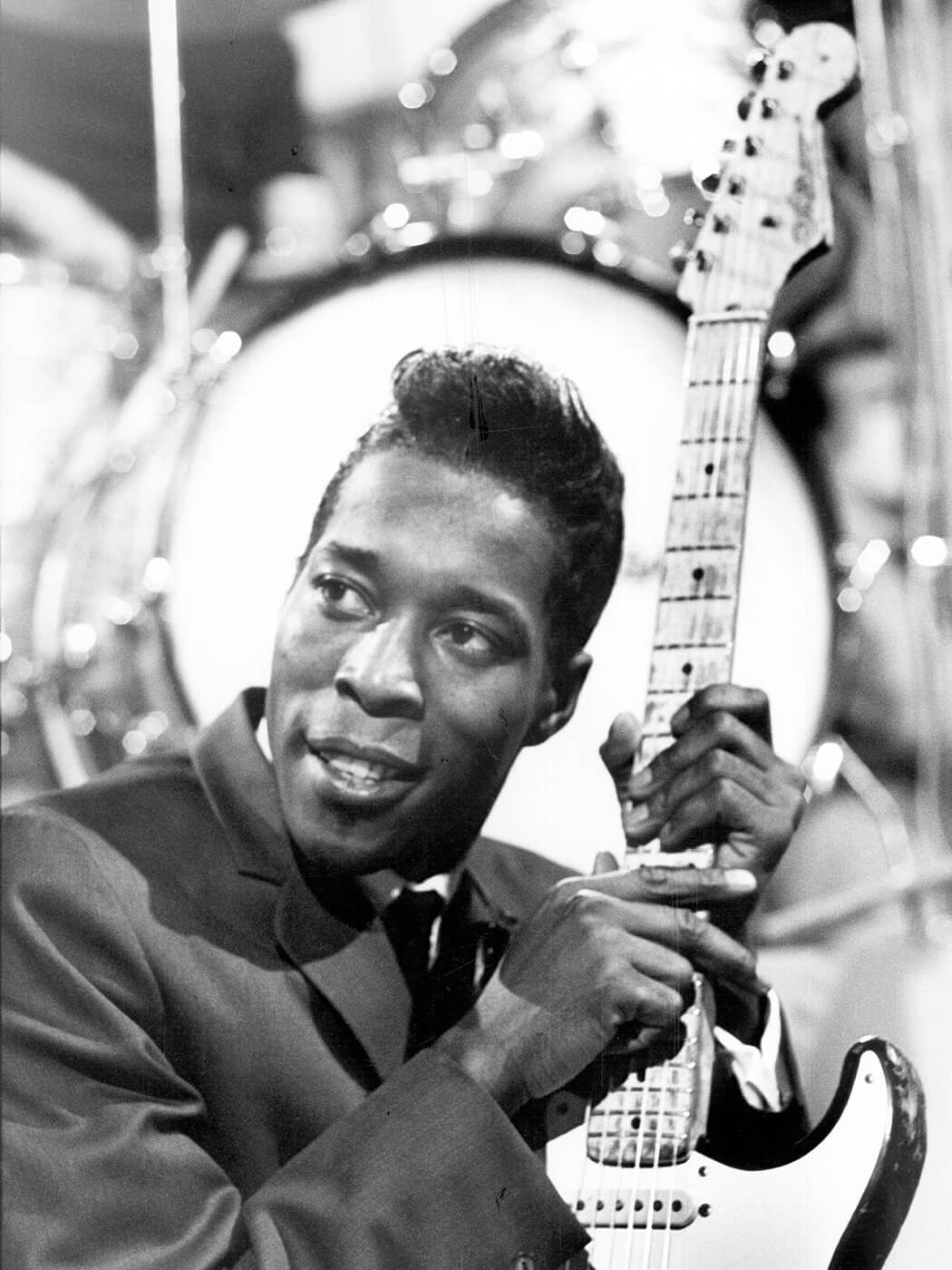
Distortion first came into prevalence with the invention of the electric guitar, and amplifier in the early 1930s. The sound was an unintended byproduct of the combination of three factors. First was the relatively low fidelity of the speakers found in early amps. This was further exacerbated by guitarists pushing their volume/gain well past what the speaker was designed for. That extra boost would create a soft clipping of the signal that occurred at the output stage of the amp. This meant that the sound coming out would overtax the amplifier's speaker. Creating the down and dirty overdriven sound that early blues guitarists were known for.
The combination of these two ingredients was then baked into the amp's sound by the general wear and tear that touring would have on the equipment. That damage would often cause the guitar's tone to act in surprising ways, as a loose electrical component could have profound effects on the efficacy of its signal. This created the building blocks for the sound of distortion that we know and love.
Rock N' Roll Realness
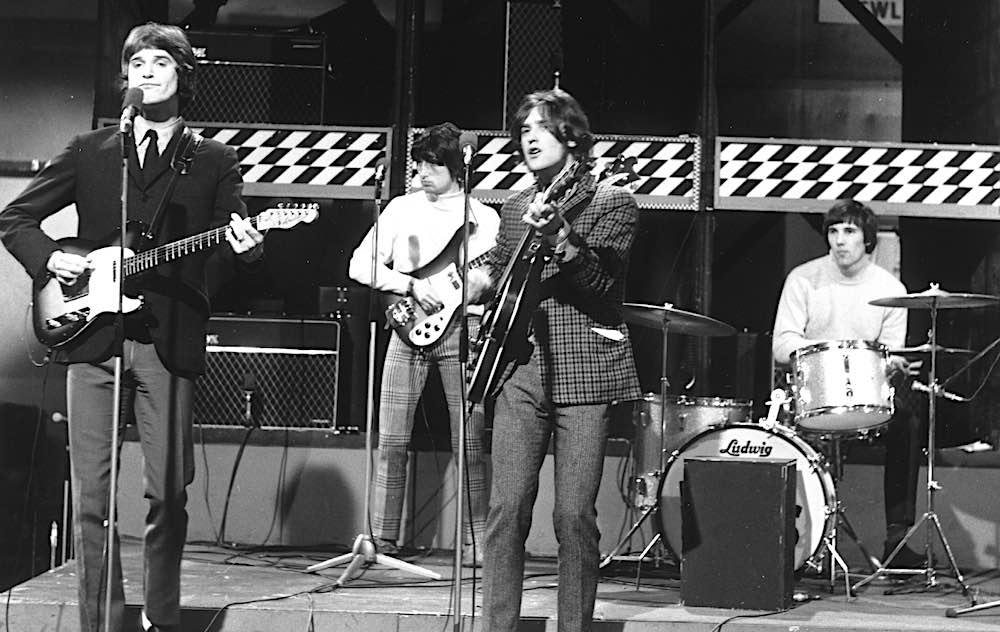
As time moved forward and the 40s and 50s bled into the 60s, the recording industry became a greater capital force in the world's economy. With that level of financial influence, record labels were investing more and more into backing bands who were making music in the popular style. This of course was rock n' roll.
Rock guitarists in particular would try to stand out amongst the crowd by upping the distortional ante of their tone. This period was an innovational wild west, for guitar players as they would make various modifications to the speaker on their amp such as poking holes through the cone, slashing the cone with a razor blade, and even partially dislodging the vacuum tubes in their rigs. Creating a rich history of distortional mods some of which are still emulated today!
Smaller Size, Bigger Ambition
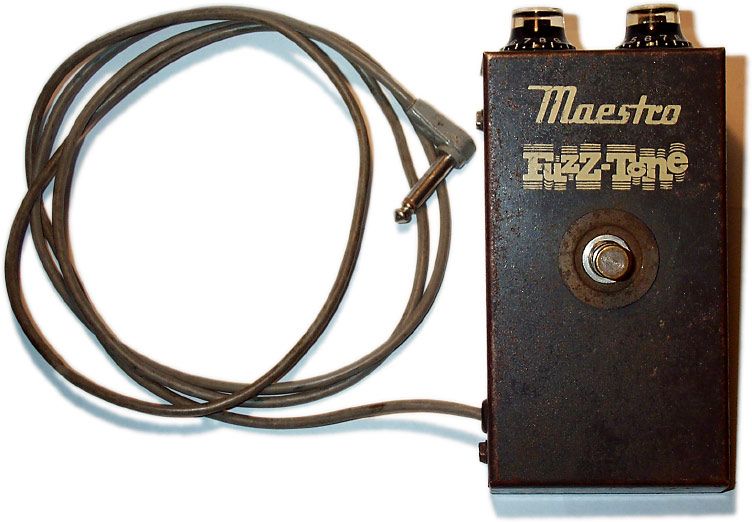
As technology progressed, these sounds became more normalized. With that normalization, engineers now had the time (and the budget) to advance the effect by reducing the footprint required for distortion. What was once a fairly complex studio trick they were now able to condense the signal process into a pedal that you could feasibly take anywhere.
This new level of access led to an explosion of the effect's popularity as it became more and more obtainable for amateur musicians. No longer was it an effect relegated to bands with a recording budget, now all of a sudden people everywhere could harness the power of distortion for themselves in their own practice spaces.
A New Type of Synthetic Sound

Around the same time, the rise of synthesizers started to occur. While keyboardists had already been using effects on their electric pianos for years, it was with the synthesizer that effect pedals started to transcend being associated primarily with just the guitar. The pairing of synth and distortion would become a mainstay of many burgeoning music genres across the 70s and 80s.
This further came to a head in the mid-1980s when a new kind of synthesizer was introduced. Roland's Tb-303 was initially supposed to be a programmable accompanist for musicians looking to practice with a bass line. However, it ended up being a complete commercial failure. Musicians found it too difficult and too time-consuming to program what they felt were overly simplistic bass lines.
As more and more of these machines went unsold, one could find them for dirt cheap in music stores, and pawn shops all across America. This created the perfect storm as DJs and musicians based around the Great Lakes who were inspired by Kraftwerk, started looking for new ways to explore the robotic funk they were hearing from overseas. Eventually, the 303, and its close cousin Roland’s TR-808 made their way into the hands of this new generation of musicians and one of dance music’s defining genres was born: House Music.
In the Beginning: House
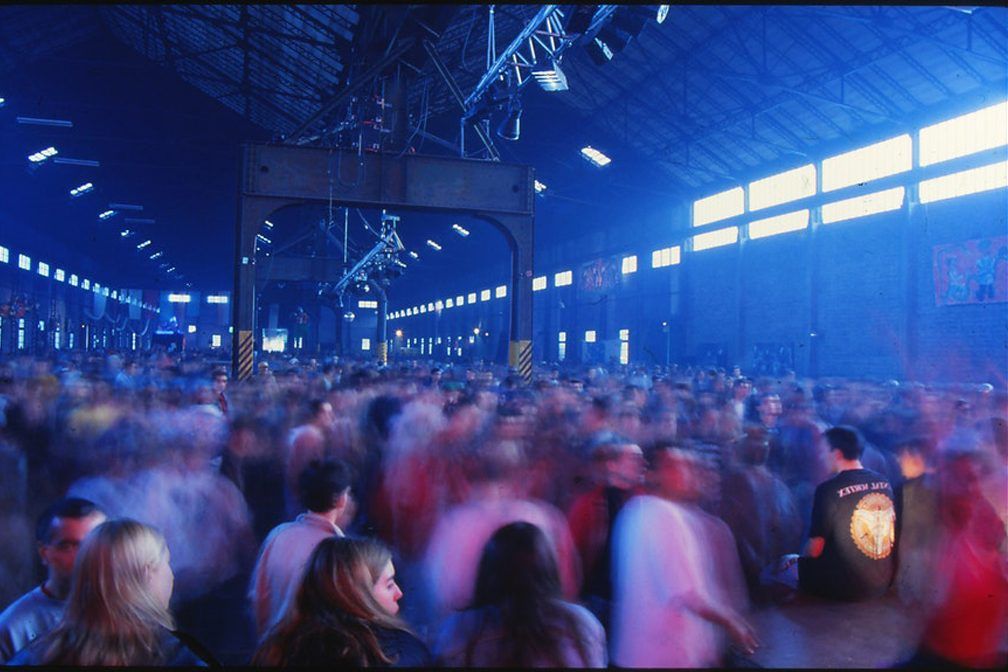
House music is a foundational genre for dance music. It is so foundational that it has given birth to a thousand different sub-genres of dance music. For this article I want us to narrow our focus to just one of them. Acid House. This is a sub-genre of house music, that focuses on the 303, and the manipulation of its filter's cutoff and resonance to create a driving textural tension that has fueled dance floors for almost 30 years.
One innovation that occurred fairly early on in the sub-genre’s history, was the pairing of the 303 with distortion pedals. This not only unlocked new sonic dimensions from the synthesizer but also exposed audiences to the sound of an effect's parameters being modulated in real time. This represents one of the first instances that audiences were exposed to such a direct and visceral form of a synthesizer's sound morphing.
The Rise of the Computational Age
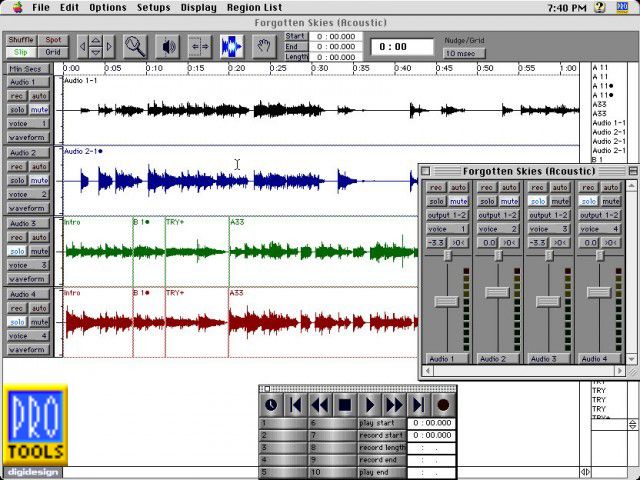
As these sound design techniques became more and more developed. Music technology advanced as well. In the 90s and early 2000s synthesizers and effects processors were finding themselves becoming more and more part of a studio environment that centered around computers, rather than a collection of bespoke recording tools. This "in the box" approach led to the explosion of plug-ins, and with them, older synths and effects began to be modeled and remodeled as engineers would try to recreate the sought-after sounds of what became legendary instruments.
To many, it seemed like the first decade of plug-in development was dedicated to the recreation of specific pieces of older gear. It wasn’t until later on that software engineers decided to turn their attention to more unique versions of effects that could only be accomplished in the digital space. This led to some of the greatest and most universally listened to synthesizers and effects processors in history. And as a direct result of this cannon, eventually, through years of blood sweat, and tears, one of my all-time favorite plug-ins was born. Rift, the future of distortion.
A Look Under the Hood
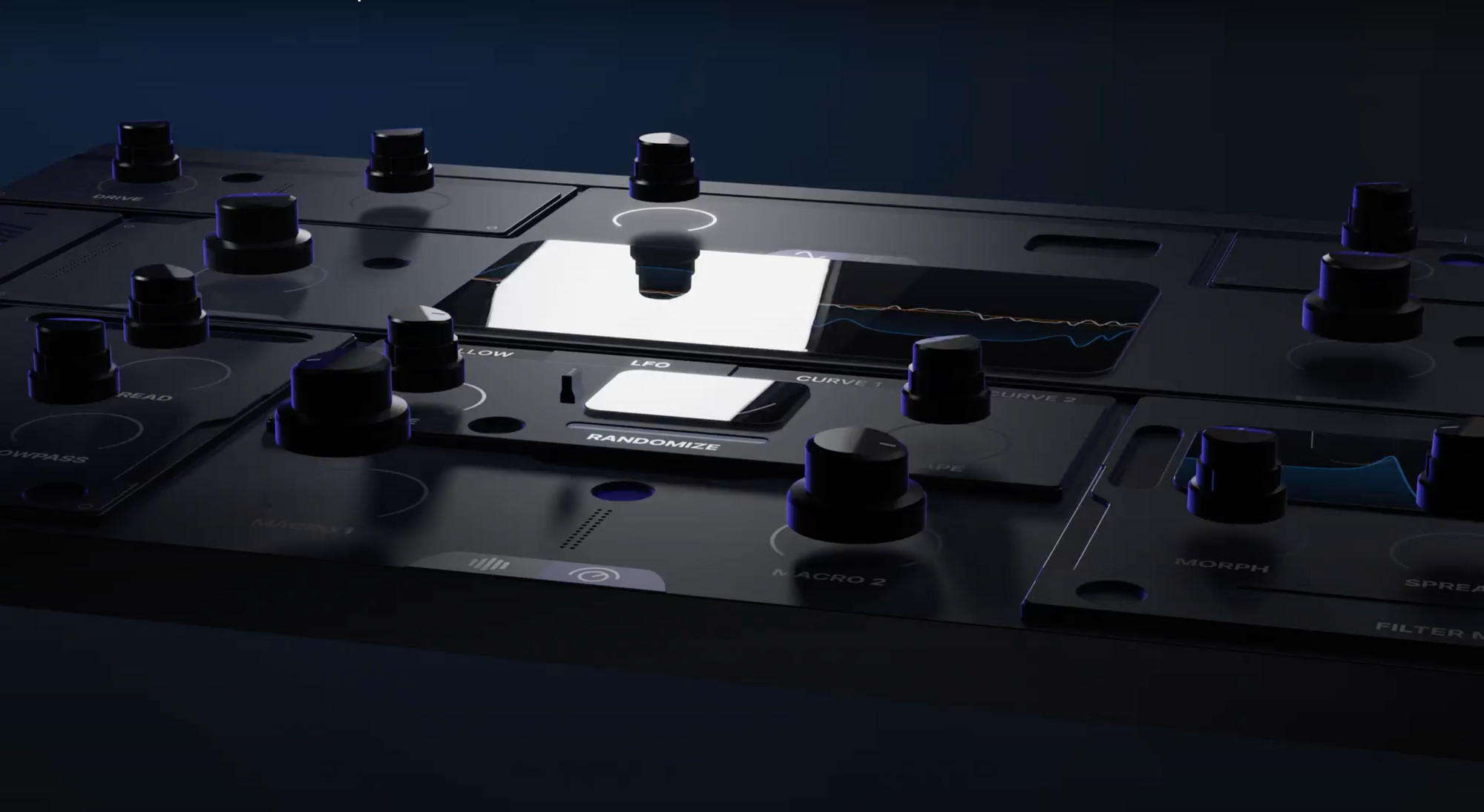
Now that we've taken a tour through some of the histories of distortion, let's dive into the plug-in itself. Rift is a distortion unlike any other. There are a million reasons that this is the case, but to my mind, the most prominent one is that the people who make it, are also the people who make music with it. This one-to-one pipeline of idea, execution, and refinement creates an effect that is as musical as it is unique. A singularly powerful tool that fuels the creativity of artists and sound designers everywhere. Now that we've set our stage, let's take a closer examination of some of the features that make Rift so special!
The Distortion Section

First, let's start with the types of distortion that Rift has available. Part of the reason Rift can create such massive textural effects is due to its long list of distortion types. These include wave shaping, wave folding, noise generation, bit reduction, and sample rate reduction. This is applied to your waveform in two distinct stages, creating the first multi-polar distortion.
Now, what is multi-polar distortion? Put simply, multi-polar distortion is similar to multi-band processing, but instead of the distortion affecting specific frequencies of your instrument’s signal. It is affecting the two different polarities of the waveform’s cycle. This creates a new approach to distortion that feels more animated and alive than your usual distortion processors.
It is then after that distortion is applied that you can blend both poles of the processed signal within the plug-in’s distortion sub-menu. Here you can choose between a plethora of blending options, such as hard and smooth curves, stereo processing, mid-side processing, and many more. You can also choose how many stages of processing the signal is taken through. These range from adding subtle warmth to your sounds to giving that bass line a set of teeth it can do some damage with.
The Feedback Section
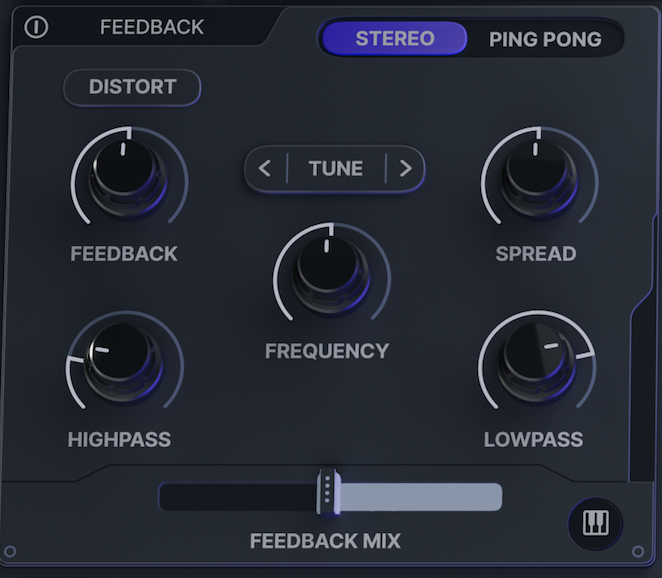
Next, let's check out the feedback section. Rift features a powerful delay, and feedback processor derived from resonators that are typically found in physical modeling software. Not only does this add another level of animation to your sounds, but you can also tune the feedback to any given note or scale. Use the submenu located in the bottom right-hand corner of the section to lock the delay into specific notes by choosing your scale via the note values present on its keyboard menu.
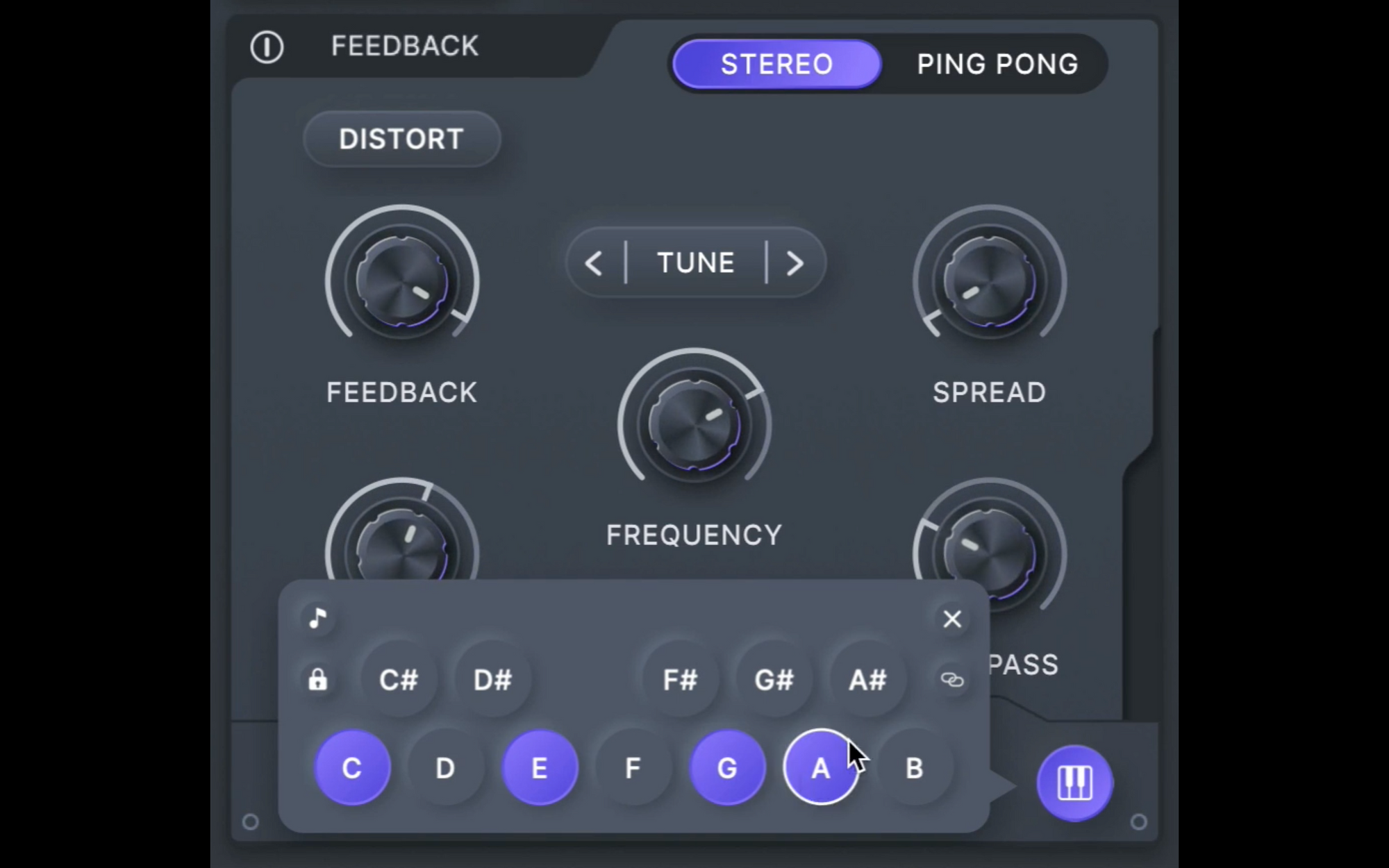
It is here that you can choose what scales you wish to use, as well as freely swap between said scales to see what sounds work best for your song. Additionally, these feedback lines can also be distorted creating a wide variety of explosive textures, perfect for any big moments on your next track.
The Filter Section
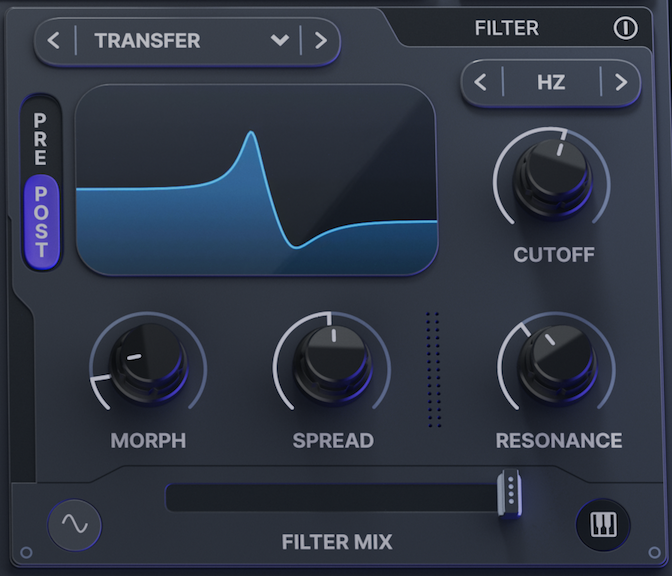
Now we'll move on to the filter. Rift features a cutting-edge morphing filter that is unlike anything seen on a typical distortion plug-in. Boasting over 20 unique filter types, Rift’s filter has powerful morphing functionality that creates sounds that no other distortion plugin can touch.
The plug-in's filter also has a tunable resonance, that much like the feedback section can lock your filter’s resonance into a specific note or set of note values. Upon further inspection of the filter section, you’ll find that filters labeled under the morphing, peaking, and harmonic subsections all have access to and respond to the filter’s morph knob.
The morph knob transforms your filter by further animating the sound in new and unique ways. Additionally, you can also control your filter’s position in the plug-ins signal chain. Meaning you can switch the filter from pre, or post-distortion.
It is also important to note that for both the feedback and filter, each section can respond to MIDI input so that you can have direct control over re-triggering or mapping the filter’s cutoff and tuning for your instruments in real time.
The Modulation Section
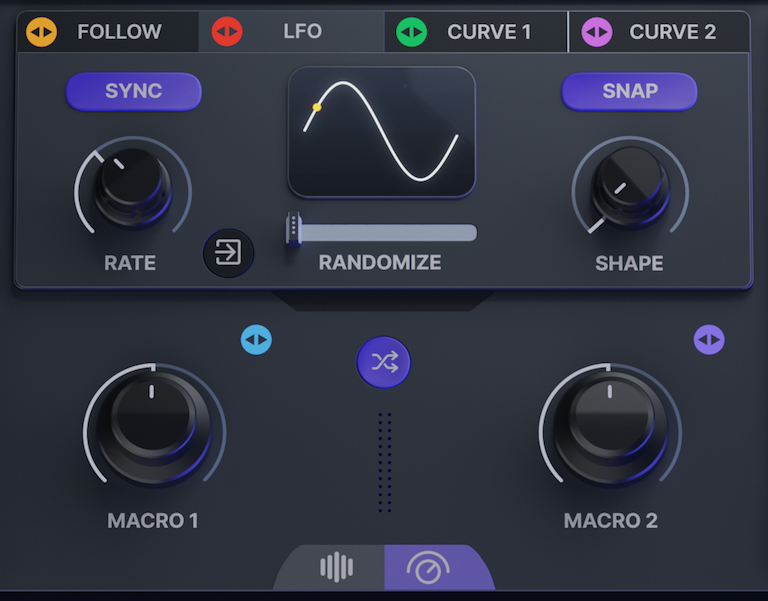
Finally, let's talk about one of Rift’s defining characteristics, its modulation section. Rift features four modifiers that are assignable to almost any of the effect's parameters. These modifiers are an envelope follower, an LFO, and 2 assignable curves, that when we get to them will blow your mind.
The first modulator we'll discuss is the envelope follower. The envelope follower is a powerful tool that lets you modulate your plug-in’s parameters dynamically by following the amplitude of an incoming signal. This can be a highly expressive tool for instrumentalists that want to tie Rift to the intensity of their performance.
Second, let's look at the LFO. The LFO on Rift has its own morphing ability that allows you to modulate smoothly between complex wave shapes to more standard hard curves. However, if you’re not looking for that kind of subtlety then simply toggle the LFO’s snap function to quickly switch between classic and hard curves for the modulator. Additionally, there is a randomness function that can be expressed through a slider at the bottom of the section giving you further opportunities for morphing your sound.
Moving on, it’s time to talk about Rift’s most powerful modulation options. These are the plug-in’s curves. Curve one and curve two both feature MIDI implementation, randomization, simple sub-menu presets, and most powerful of all the curve editor.
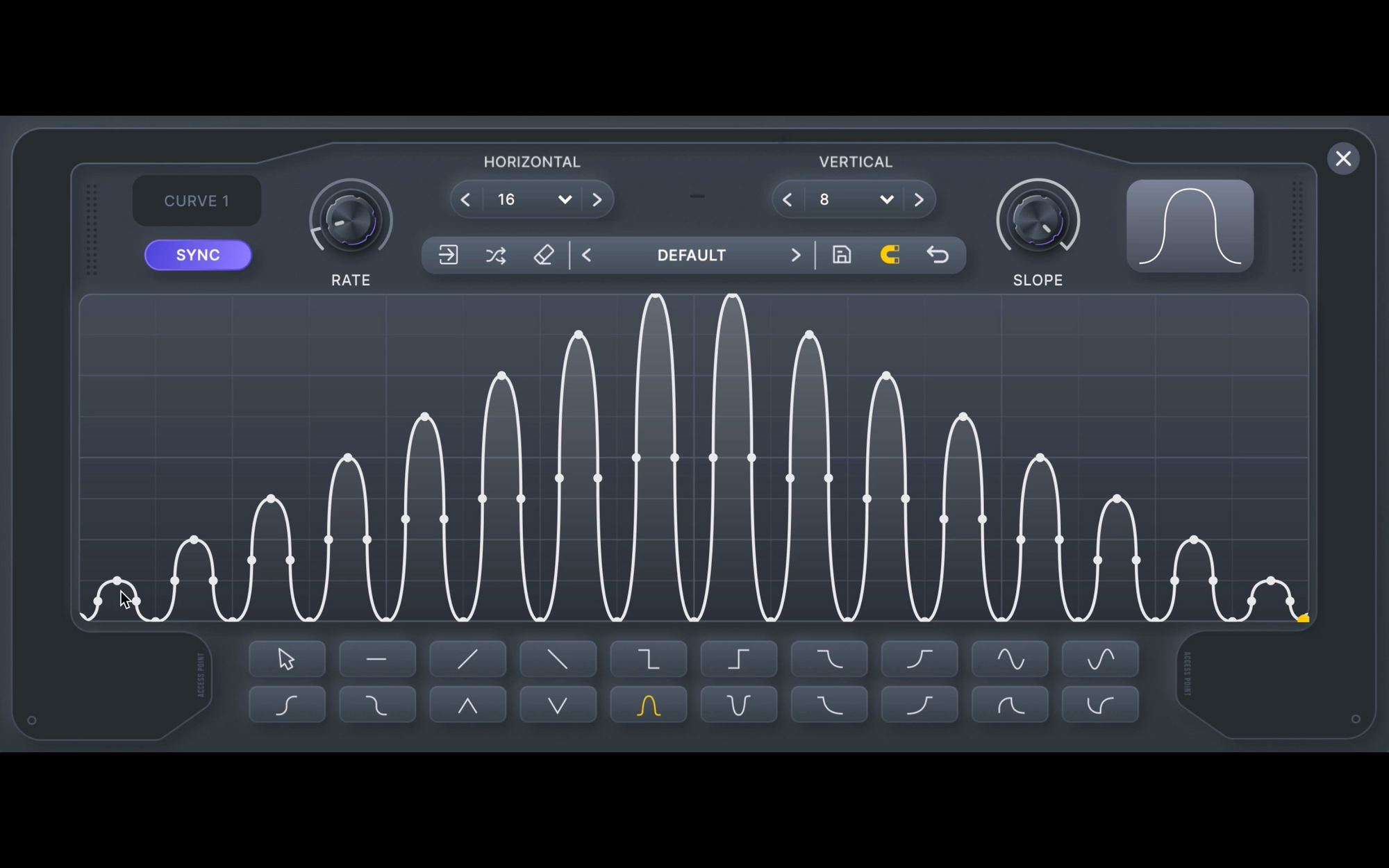
The curve editor is a window for the point-to-point creation of custom modulation curves that you can then assign to nearly any parameter on the plug-in. This is a monstrously important tool for sound design in Rift as you now have a surgically precise modulation curve derived completely from your imagination. This is a sound designer’s dream, yet Rift makes it all stunningly possible!
Last but not least, two assignable macro knobs allow for quick and easy parameter changes from Rift’s high-level view, so that you can stay in the flow of your music-making. These modulation options are what makes Rift one of the most powerful plug-ins currently available to the public.
While there is no shortage of distortion plug-ins out there, Rift is without a doubt the most exciting. No other plug-in comes close to the level of options for sound designers to take advantage of. It is easily the final word for those looking to express their sounds with the same level of complexity that one would approach their compositions.
When you consider all of the functionality at your fingertips it’s easy to see why Rift is becoming a mainstay in studios across the globe. It is one of those rare achievements that is so easy to use anyone can cycle through the provided presets and have fun, yet so complex that the modulation section alone could be the subject of its own entry into our blog.
This is because Rift is a tool lovingly crafted by musicians for musicians, and you can feel that craftsmanship in every devoted detail of its toothy distortion. That’s why I wanted to highlight Rift as our first entry into this new series. Because put simply there is no other type of distortion (and aside from the rest of Minimal’s library) no other plug-in in the world quite like it!
If you also feel touched by the spirit of this incredible tool for distortional devastation, then consider following this link to purchase Rift and see what it can do for you!


